Will Pogacar finally be able to drop Van der Poel in Milan-San Remo with Colnago's new Aero beast?
CyclingTuesday, 21 January 2025 at 12:42
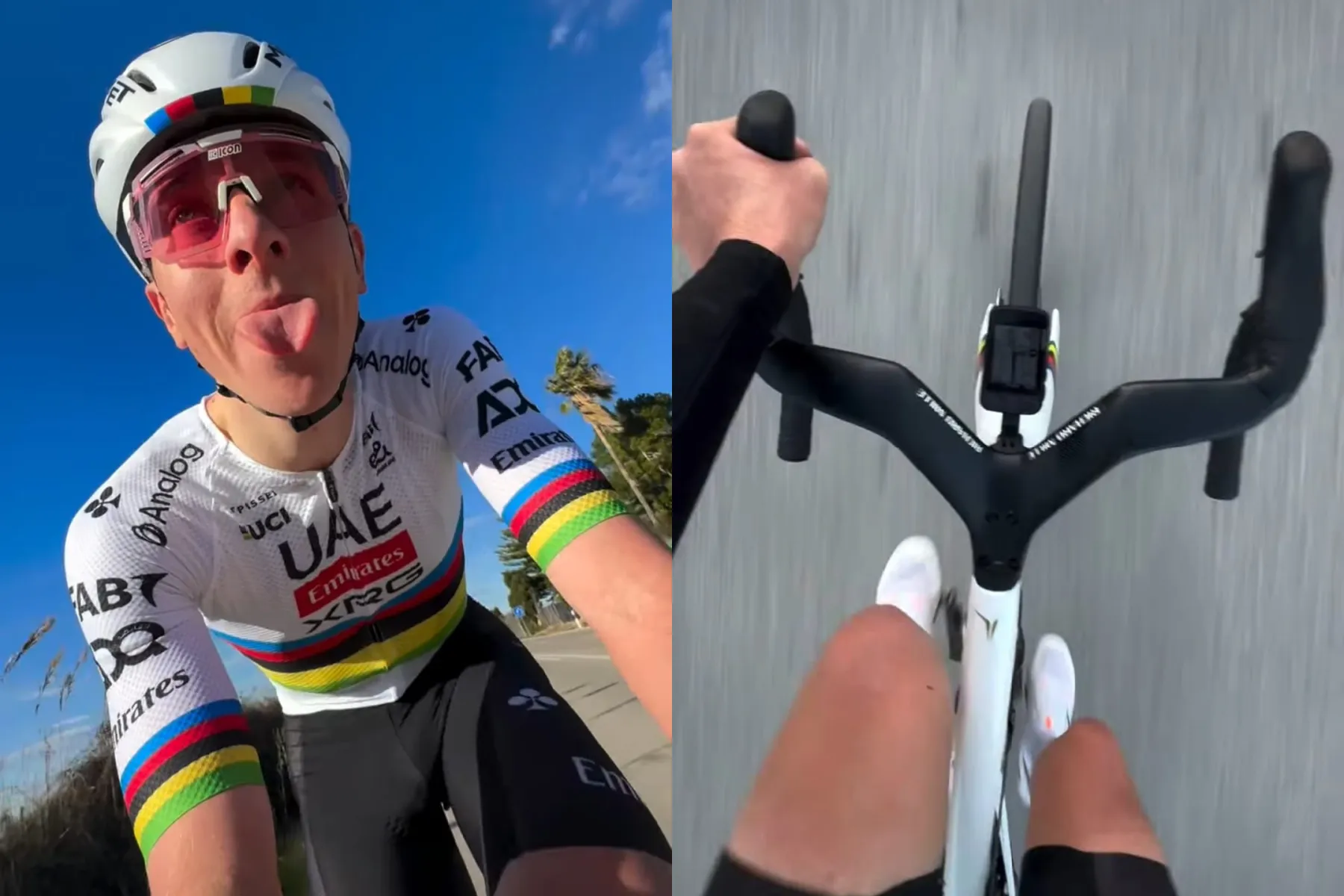
While UAE Team Emirates-XRG believes there is still room for growth in Tadej Pogacar’s physical and mental performance, the team is also helping him by equipping him with a lightning-fast new bike. With the Colnago Y1Rs, the most successful cycling team of the moment claims to have set a new standard in aerodynamics. IDLProCycling.com spoke with Project Engineer Filippo Galli about Colnago’s latest flagship bike and its partnership with UAE Team Emirates-XRG.
Priced at €10,500, the Colnago Y1Rs won’t be available for purchase until May, but Pogacar and his teammates have been riding it since December. “Designed to defy the wind, the Colnago Y1Rs is the ultimate expression of aerodynamic efficiency," reads the official description from the Italian bike brand. “This bike is built to deliver optimal performance in the fastest races, combining advanced technologies and innovative design for sprinters and breakaway specialists."
Not comparable, then, to the V4RS—the ultra-lightweight climbing bike that Pogacar used to dominate climbs at will—the Y1Rs is built for different terrain. In 2025, cycling is no longer a sport where one bike can do it all. Each race demands specialized equipment, and Team Pogi believes the Y1Rs is their new weapon for flat and rolling terrain. “Wind tunnel tests have shown that the Y1Rs saves 20 watts at a speed of 50 kilometers per hour,” Galli revealed, highlighting the bike’s cutting-edge aerodynamic advantages.
Read more below the photo.
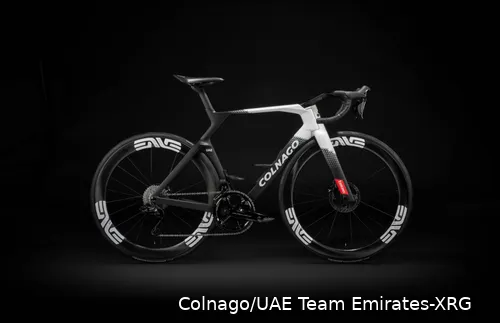
The Colnago Y1Rs, the new aero beast of UAE Team Emirates-XRG
Angled seat post and sleek cockpit: Key innovations in the Colnago Y1Rs
Diving into the details of the bike, two standout features immediately catch the eye. The first is the angled rear end with its sloped seat post. A closer look at the handlebars—or the cockpit, as project engineer Filippo Galli likes to call it—reveals a Batman-like design, with a deep V-shape extending toward the frame. "The special shape of the handlebars isn’t new, and Colnago doesn’t claim it is. Cervélo has done something similar before, and Colnago itself used this design on the track back in the 1980s," Galli emphasizes.
Yet, it’s noteworthy that Colnago has managed to make such a design commercially viable. "It was our task to optimize the shape for aerodynamics, stiffness, and overall feel on the bike. I’m proud of the front end because it was a real challenge, and I know how much work went into it. That we eventually achieved the desired performance is thanks to the entire collaborative process with all involved parties."
Looking ahead, Galli shared that the design has also provided a platform for further aerodynamic testing. "We’re always thinking about the next bike and working on new projects. There’s no new launch planned yet, but when you work with the best riders in the world, you always have to stay ahead. Other teams will try to replicate this bike, so we must remain up to date."
"And for the future, we’ve also developed a model from this that allows us to continue testing aerodynamics more effectively," Galli said, already looking ahead to what’s next. "We’re always thinking about the next bike and working on new projects. There’s no new launch planned at the moment, but when you’re supporting the best riders in the world, you always have to keep moving forward. Other teams will try to emulate this bike, so we need to stay up to date."
Read more below the photo.
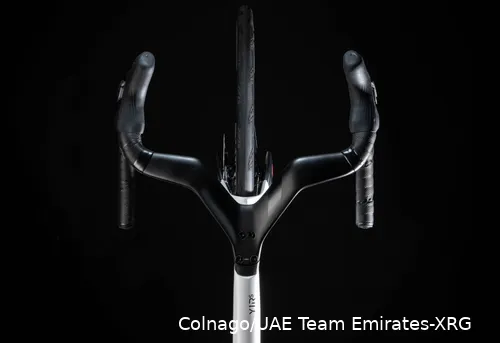
UAE Team Emirates opts for a deep V-shaped handlebar design
UAE Team Emirates didn’t prioritize aerodynamics at all costs
Galli speaks confidently about the Colnago Y1Rs, convinced it sets a new trend in the ongoing pursuit of aerodynamics and speed. "I focused primarily on the aerodynamics and performance of this bike. Aerodynamics are the foundation and the most important pillar of the Y1Rs, and you can see that just by looking at it. But we’ve aimed to achieve even more, thanks to input from the team."
UAE Team Emirates-XRG of course had a significant say in the bike’s development. "They wanted an aerodynamic bike as long as it didn’t compromise the feeling during races, especially for sprinters in technical corners or fast stages. We faced a luxury problem at the start of this process, because we already have the best rider in the world who was satisfied with the Colnago bike we had, in all racing situations."
That rider, of course, is Tadej Pogacar, whose needs were a central consideration, according to Galli. "If you want to improve the bike, you have to build from that starting point. With Colnago, we were confident we could make the bike even more aerodynamic without sacrificing the qualities Tadej was already happy with. His previous bike was already incredibly fast and reliable, and we’ll continue using it for mountain stages or races with a lot of climbing. This aero bike is about 200 to 300 grams heavier than the V4RS."
Read more below the photo.
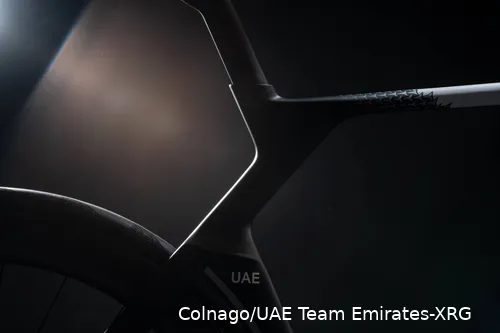
Colnago pushes the limits of practicality and regulations with the saddle
When do UAE riders choose aerodynamics and when do they choose weight?
In cycling, 200 grams can feel like a light-year. Adding that weight could instantly negate the aerodynamic advantage of 20 watts. That’s why UAE Team Emirates-XRG riders choose their bike based on the race—whether to go with the Y1Rs or stick with the V4RS. "It’s up to the riders and based on tests to determine which bike is used. We’ll also test the frames with different wheels and tires, although I already know that this aerodynamic frame won’t pair well with the lightest wheels," said Filippo Galli.
"We also tried various aerodynamic water bottles, but the riders quickly voiced their preference for round bottles in the dynamics of a race, so we optimized those," the Italian engineer explained, showing his attention to detail. "Additionally, we conducted extensive testing with the riders to achieve the right stiffness in the front end, which was quite a challenge. Thanks to new design ideas, we ultimately succeeded."
"In December and January, we conducted in-depth analyses by having all the riders test the bike on different courses," Galli continued. This allowed the performance team to create a clear picture of when each bike would offer the most advantages. "I don't know exactly where the tipping point lies. The aerodynamic bike is heavier but saves 20 watts. It will also depend on the rider and their specific role," Galli emphasized.
Read more below the photo.
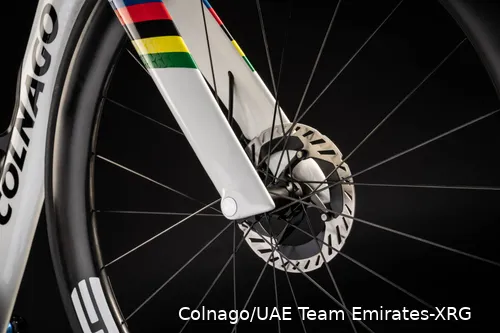
Pogacar's rainbow-colored bike from Colnago is ready
Pogacar can choose between the Colnago V4RS and Y1Rs for Milan-San Remo
When asked for more details, Galli is willing to share when he believes the Y1Rs can truly make a difference. "Think of riders who need to chase in the peloton on flat sections or launch long attacks of 50, 60, or even 100 kilometers, as Tadej often did in 2024. If he breaks away and the final part of the stage is flat or rolling, or there’s wind, then it’s the best choice."
A typical bike for Milan-San Remo? Galli smiles. He can’t deny that the aero bike could make a difference in the first Monument of the year. "For Milan-San Remo, this bike is very well-suited. It would make sense for Pogacar to use it there because it’s a high-speed race. I also think of the riders who have to lead the pack all day. Ultimately, it’s up to Tadej to decide what he’ll do. But if you ask me now, I think it would be logical for him to choose the new bike."
"Fast races, long hours in breakaways, very high-speed stages, but also climbs with gradients of 4 or 5 percent that are now ridden at more than 30 kilometers per hour," Galli lists as the ideal conditions for the new Colnago. "Only on steep climbs does the weight advantage of the V4RS become significant."
Read more below the photo.
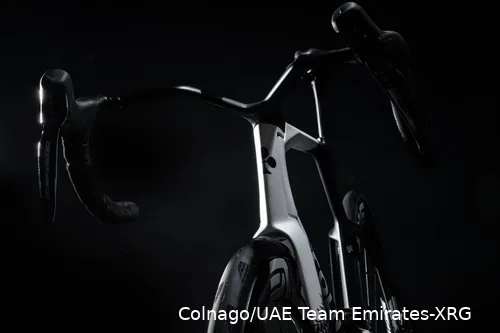
Will we see Pogacar on the new Colnago in Milan-San Remo?
Team Pogacar aims to set new standards with handlebars and saddle
During the team presentation in December, Pogacar indicated he was happy with the new bike, even though he had barely ridden it at that point. His comments might have needed to be taken with a grain of salt back then. "In San Remo, the aero bike won’t be the most important factor, but you still have to get over the climbs, and the descents are very risky. It’s a technical finale, so you need a fast bike," said the Slovenian.
However, the Y1Rs might provide just the edge Pogacar needs to finally break away from his rivals. On his lightweight climbing bike in recent years, wattage monsters like Mathieu van der Poel and Wout van Aert managed to stick with him on the Cipressa and Poggio. Could 20 watts make the difference in the finale? "This bike is very stiff, but thanks to the shape of the saddle's base, we offer riders extra comfort in an active seating position, aided by vertical compliance. If riders can also maintain the most aerodynamic posture, that's a big advantage."
Galli speaks proudly of the bike but acknowledges that this Colnago design wouldn’t have been possible in 2023. "Thanks to the new UCI regulations introduced at the start of 2023, we were able to develop this bike. We’ve been working on the mechanics since the start of our collaboration. While much of it focuses on the cockpit, the saddle is another key component of this bike. "The new UCI rules allow us to do anything with the saddle as long as it aligns with the top of the tube. We also tested different carbon layouts, but this one proved to be the best," Galli explained.
IDL-productions
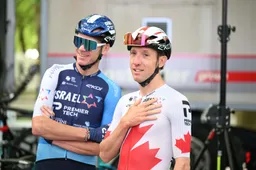
? - Premier Tech may leave Israel, noisy 2025 ánd era-Froome behind, but also loses heavy weights
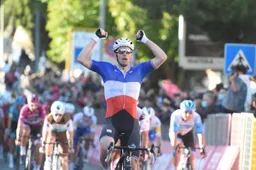
A career of staying out of trouble and a lot of wins: with Arnaud Démare, the peloton loses a massive character
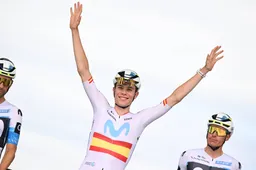
Sudden doping case around Lazkano pushes devastating verdict on Movistar into the background
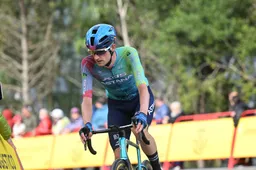
"We already knew Wout from the Tour": how Poels’ transfer to Unibet Tietema Rockets came together
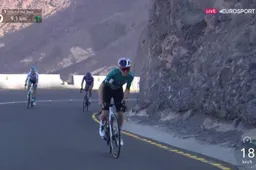
🎥 Anyone who saw Tom Pidcock dominate for Q36.5 on a 22 percent (!) climb should’ve known better back then
Latest Cycling News

Cycling news at your fingertips: Follow IDL Procycling everywhere!
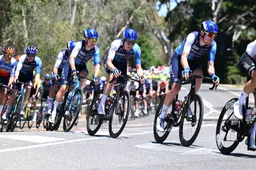
Premier Tech walks away despite name change: co-title sponsor quits cycling team with immediate effect

Armstrong steps in again: Wiggins heads to top US trauma clinic — while his friend pays the full bill
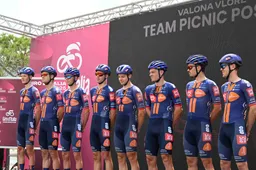
Max Poole and Oscar Onley see Picnic PostNL pick up two gems from the lower leagues: 'Data confirmed what we suspected'
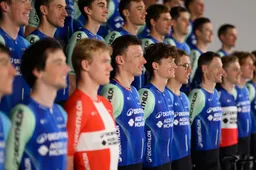
Decathlon CMA CGM needs to forge a team out of new signings - and does so through partying, beer and shots
Popular Cycling News
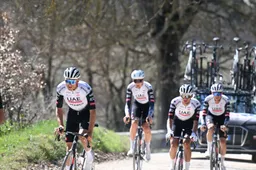
EF Education - EasyPost keeps can't stop signing top talents and snatches a third one - this time a UAE-star

Premier Tech walks away despite name change: co-title sponsor quits cycling team with immediate effect

? - Premier Tech may leave Israel, noisy 2025 ánd era-Froome behind, but also loses heavy weights

Armstrong steps in again: Wiggins heads to top US trauma clinic — while his friend pays the full bill
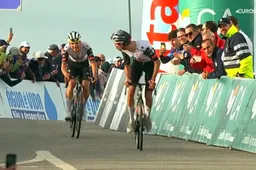
Early Algarve scare set the tone for Jonas Vingegaard’s 2025: solid… but a step behind UAE and Pogacar
Latest Comments
- Now the Palestinian protestors can stop their whining. Trump came to the rescue. So they can now STFU and go back to waving the rainbow flags.raufus15-10-2025
- Cracked the code lol. If it was that easy to 'crack the code' jonny Vegas would be charging up the Kwaremont giving Pog a dose of his medicine. Evenepoel can't match pog on a climb and neither can mvdp. Anything with a half difficult climb and Pog smashes the field. Even on flat(ish)parcours like Roubaix it came down to a mistake and crash by pog to definitively crown mvdp. MSR is the only one that Pog probably won't win.kevpt10-10-2025
- We've seen this movie before. I think Pogacar is doping.DeadBlow10-10-2025
- 👍Bea08-10-2025
- 👌🏻Bea08-10-2025
- What the data doesn't show is how much of an effect drafting had for evenepoel. Pogacar went with del toro at 100km whilst Evenepoel was still in the bunch. Despite the bike changes he still had a lot of assistance getting back to the bunch. Pogacar then rode 60km solo whilst evenepoel rode with Healy/Skjelmose until going solo in thd last 10-15km. Thats ~20% less power / energy requirements for 45-50km. Apples and oranges...kevpt30-09-2025
- 👏👏Bea24-09-2025
- Agreed! As we all know now, Juan Ayuso will be on another team. But it was sweet to see him win the stages at La Vuelta. I do love the drama of cycling admittedly but its clear to see the talent of winners of stages in a Grand Tourryhw2814fq921-09-2025
- Pogacar has no competition he has won everything, I cant imagine even being him in that position!! Crazy. I am sure he has some back up plan for how he wants to spend his retirement years at age 30 onward. Does he like beer? Plenty of innovation in brewing. And you don't have to be super social. Chapeau/Cheers whatever you like Tadej you will do.ryhw2814fq921-09-2025
- Plus its confirmed that the Philadelphia Cycling Classic up the Manayunk Wall is back for 2026! hooray for thatryhw2814fq918-09-2025
Loading